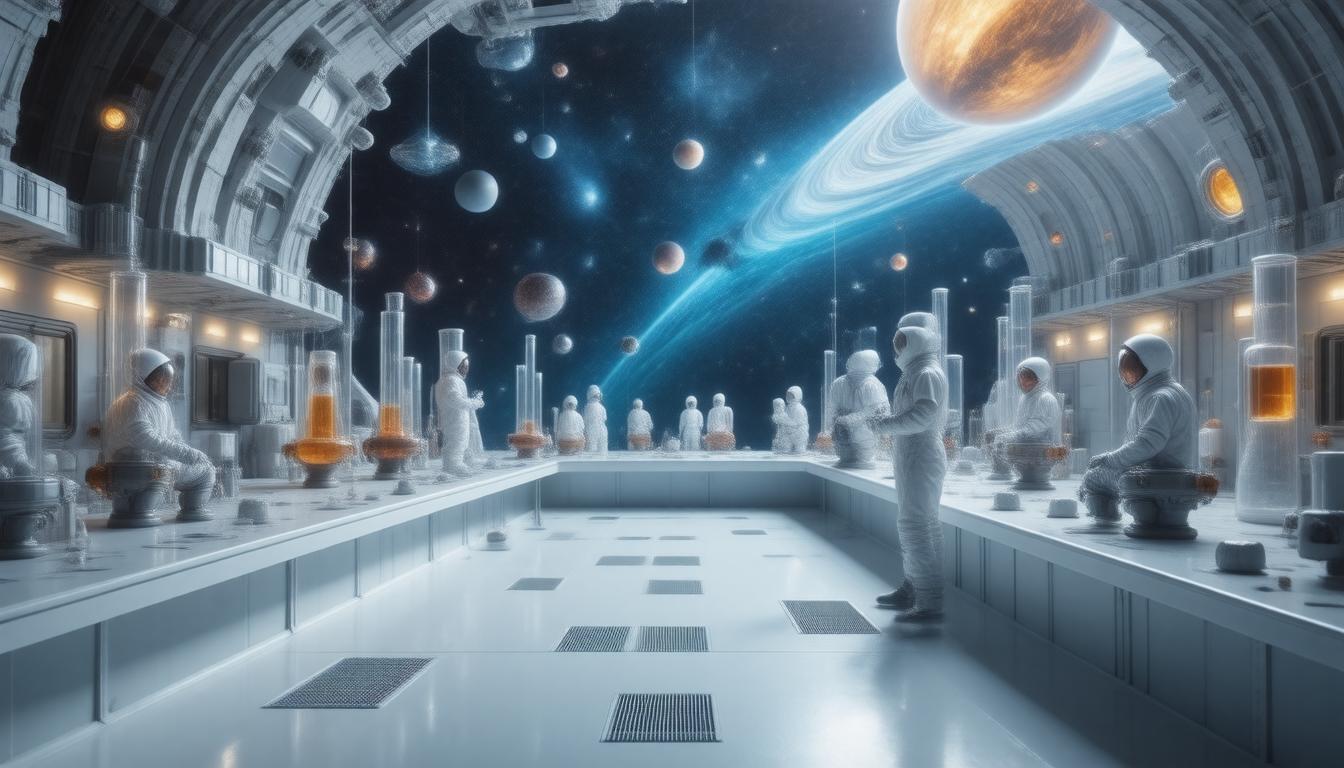Microgravity, a unique state experienced in space environments like the International Space Station (ISS), has opened a myriad of avenues for scientific exploration and technological advancement. By eliminating the gravitational forces that govern behaviors of matter on Earth, microgravity experiments allow researchers to uncover fundamental principles of physics, biology, and chemistry. This article delves into the characteristics of microgravity, the types of experiments conducted, and their implications for science and industry.
Understanding Microgravity Characteristics
In microgravity, conventional gravitational effects such as buoyancy, convection, hydrostatic pressure, and sedimentation are significantly diminished, allowing for the observation of phenomena that are hidden on Earth. Four key characteristics define the behavior of materials in microgravity:
-
Absence of Buoyancy and Sedimentation: In the lack of gravity, liquids of varying densities can coexist without separation, enabling the production of advanced materials that require precise mixing of different components.
-
Absence of Convection: On Earth, thermal convection causes fluids to circulate due to temperature differences. Microgravity conditions allow for controlled heat distribution, facilitating the creation of higher-quality materials that are not subject to gravitational influences.
-
Absence of Hydrostatic Pressure: The weight of liquids exerts pressure that varies with depth. In microgravity, the smooth behavior of liquids leads to innovative approaches in studying soft materials and other substances.
-
Containerless Float: With no force of gravity, liquids can be contained without the use of traditional vessels, allowing researchers to study how substances interact in a virtually unhindered manner, and to develop new materials free from contamination.
Microgravity Experiments: A Historical Perspective
Research utilizing microgravity dates back to the 1970s, with landmark initiatives such as the Skylab Project paving the way for extensive experimentation in space. Early successes included experiments in crystal growth, which demonstrated that the quality and uniformity of materials could significantly improve under microgravity conditions. The advancements in materials science, particularly in semiconductor manufacturing, have been critical, with Japan emerging as a frontrunner in this field through pioneering experiments that harnessed microgravity for enhanced material properties.
Over the following decades, the Space Shuttle program and the establishment of the ISS have provided platforms for astronauts and scientists to conduct over 300 experiments across various disciplines, including fluid dynamics, combustion science, and life sciences. Each experiment leverages microgravity to address questions that remain unresolved on Earth.
Key Research Areas in Microgravity
-
Fluid Physics: Understanding fluid dynamics in microgravity is crucial for applications ranging from semiconductor manufacturing to medical product development. Researchers have focused on phenomena such as Marangoni convection, where surface tension differences drive fluid motion. These insights can lead to the optimization of processes that are critical in various industries.
-
Combustion Science: The intricacies of combustion—an essential process for energy production—are significantly altered in microgravity. Without the buoyant forces acting on flames, scientists can analyze combustion stages more effectively, leading to advancements that can improve fuel efficiency and reduce emissions.
-
Life Sciences: The ISS serves as a unique laboratory for studying biological processes in space. Experiments examining DNA sequencing, plant growth, and even astronaut health contribute to our understanding of how long-term spaceflight affects living organisms. This research is vital as humanity prepares for future missions to Mars and beyond.
The Road Ahead: Applications and Innovations
The knowledge gained from microgravity experiments not only enriches scientific understanding but also has profound implications for technological innovation on Earth. Enhanced manufacturing processes for pharmaceuticals, improved materials for electronics, and insights into health can significantly impact multiple industries.
As we continue to explore the microgravity environment, the potential for discovery seems limitless. Each experiment provides a stepping stone towards understanding the universe’s deepest secrets while shaping the next generation of technologies that could transform our lives. The journey through microgravity is an ongoing saga of human curiosity and ingenuity, opening doors to new realms of knowledge that will define the future of science and technology.
In summary, microgravity experiments represent a pivotal frontier in scientific research, tapping into phenomena that defy earthly constraints and leading to groundbreaking innovations applicable both in space and on our home planet.
Join Alpha Centi and give a unique boost to your career and professional profile today! [color=rgb(4, 53, 157)]https://alphacenti.org/join/[/color]


